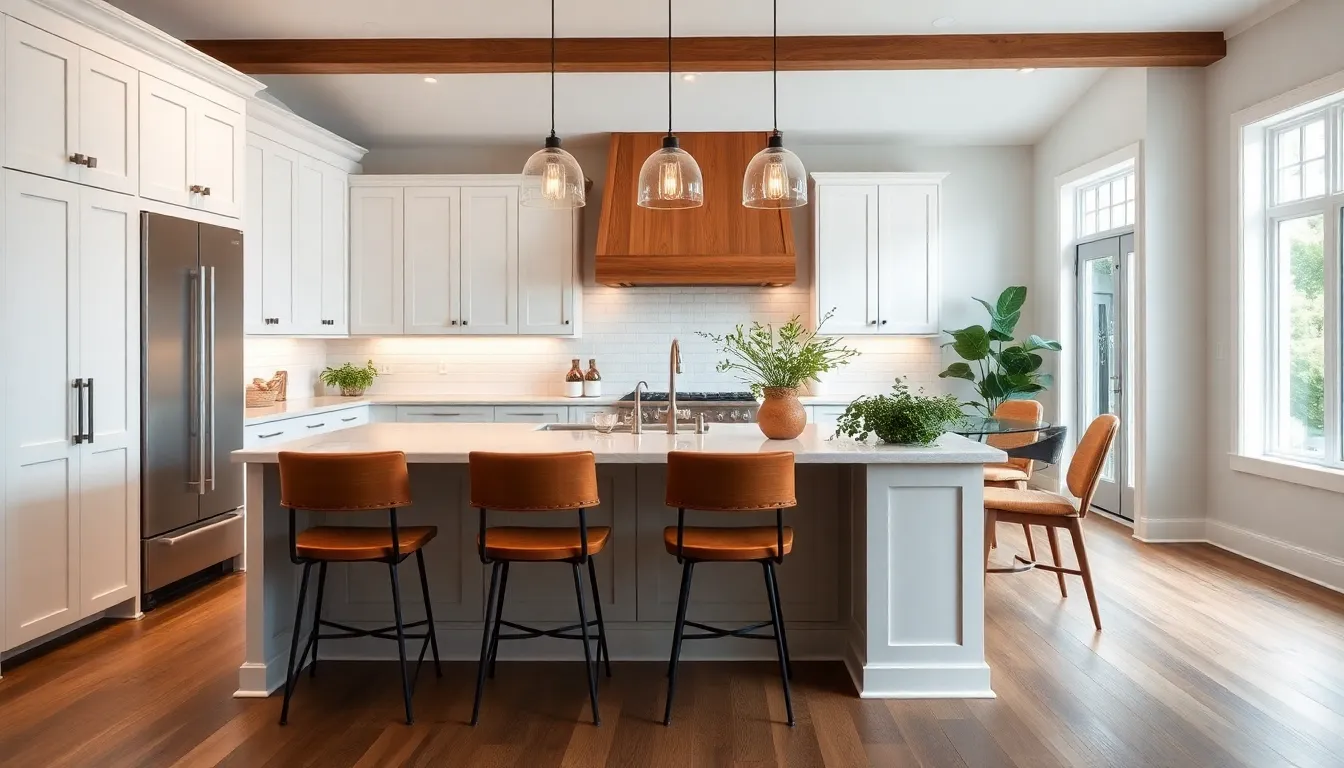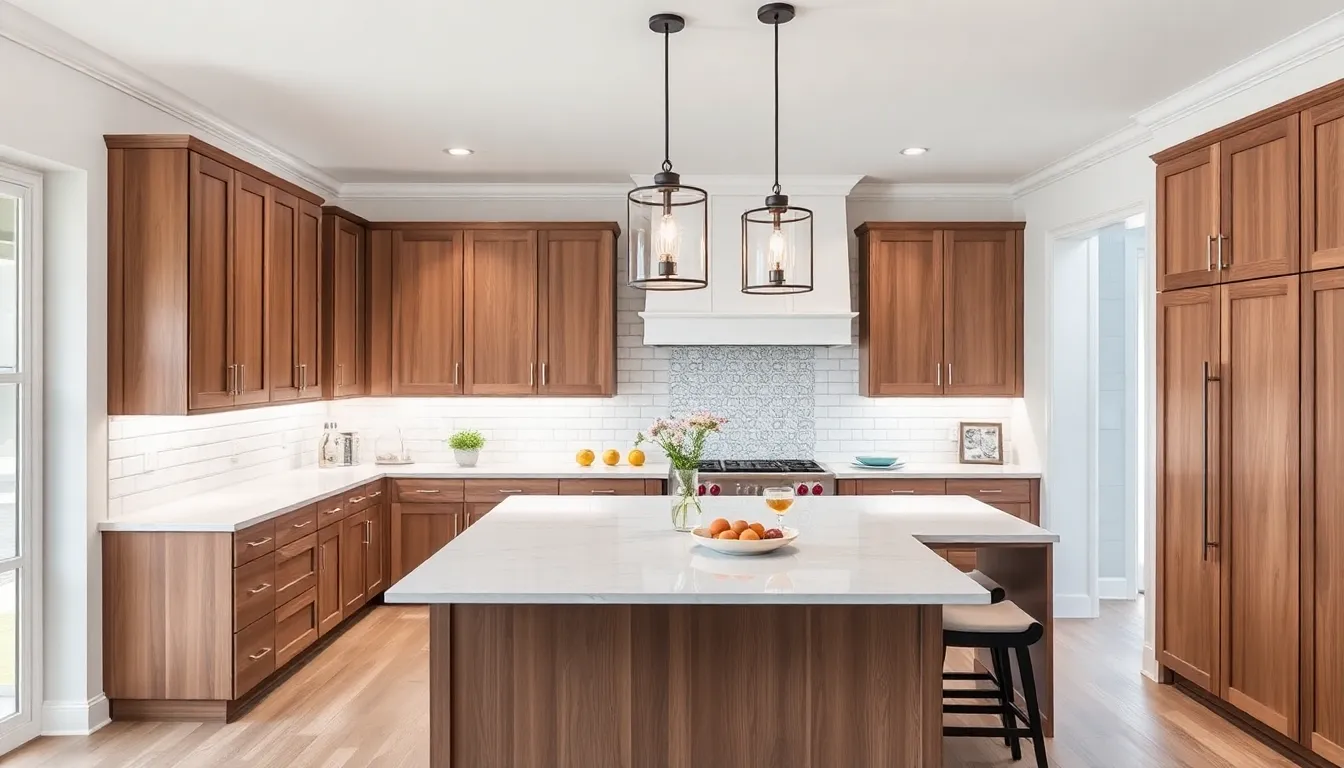Have you ever stumbled into a kitchen that feels like a beautifully wrapped present, showcasing the best of both traditional charm and modern sleekness? Welcome to the world of transitional kitchens. These culinary havens strike a unique balance, catering to every chef’s whim while being a feast for the eyes. If you’ve been dreaming of a kitchen upgrade that marries the old with the new, keep reading: we’re diving into what makes transitional kitchens the hot topic at the dinner table.
Table of Contents
ToggleWhat Is a Transitional Kitchen?

A transitional kitchen blends elements from traditional and contemporary designs, creating a style that feels familiar yet refreshingly modern. This approach allows homeowners to enjoy the best of both worlds. Think of it as the kitchen equivalent of a well-tailored outfit, dressed up yet comfortable. The transitional style is particularly appealing to those who want to evoke nostalgia while embracing the latest trends. It’s like enjoying a classic film with a twist of today’s cinematic flair.
Key Features of Transitional Kitchens
Transitional kitchens come with distinctive features that set them apart from their purely traditional or modern counterparts. Let’s break down these key elements:
Color Schemes and Materials
A balanced palette is vital. Light colors like soft whites and grays are often paired with warmer wooden tones. This blend creates a soothing backdrop, inviting warmth while maintaining a fresh look. Materials like natural stone, quartz, and even glass are favored to add dimension to the space.
Cabinetry Styles and Finishes
Transitional cabinetry often features clean lines but with decorative details. Think shaker-style cabinets topped with a sleek finish. Mixing painted cabinets with wood grains adds more texture and interest without overwhelming the space.
Countertops and Backsplashes
Countertops in transitional kitchens typically feature a smooth and elegant appearance, such as quartz or polished granite. Backsplashes, on the other hand, offer opportunities for creativity, where classic subway tiles can meet patterned or textured options, ensuring a striking visual punch that energizes the room.
Lighting and Fixtures
The right lighting can transform a transitional kitchen into an inviting gathering spot. Layered lighting is key, combining ambient, task, and accent lighting. Decorative pendant lights above an island serve both function and style, enhancing the kitchen’s overall aesthetic. Fixtures in brushed nickel or matte black often complement the mixed materials and colors, adding a contemporary touch that feels cohesive.
Designing Your Transitional Kitchen
Creating your dream transitional kitchen is all about thoughtful design choices. Here are two crucial aspects to consider:
Space Planning and Layout Considerations
A well-planned layout is essential for efficiency. An open-concept style can effortlessly blend spaces, allowing for an interactive cooking and dining experience. Positioning the sink, stove, and refrigerator in a triangular formation is not just practical: it encourages flow and makes meal prep a breeze.
Incorporating Personal Touches
While transitional kitchens draw from established styles, there’s room for personalization. Incorporating family heirlooms or unique art pieces can lend character, bridging the gap between the past and present. It’s these touches that turn a kitchen into a home, allowing it to reflect the owner’s personality.
Tips for a Successful Transitional Kitchen Remodel
Remodeling a kitchen can feel daunting, but with the right approach, the process can be manageable and enjoyable. Here are some tips:
Common Mistakes to Avoid
One common pitfall is neglecting the balance between traditional and modern elements. Striking too hard in one direction can lead to a disjointed feel. Always aim for harmony in your choices, colors, materials, and textures should work together rather than compete.
Budgeting for Your Remodel
Budgeting is crucial for any remodel. It’s wise to prioritize key areas such as cabinetry and countertops, which can make a significant impact. But, allow flexibility in your budget for unexpected costs: it’s not uncommon to encounter surprises during renovations.







